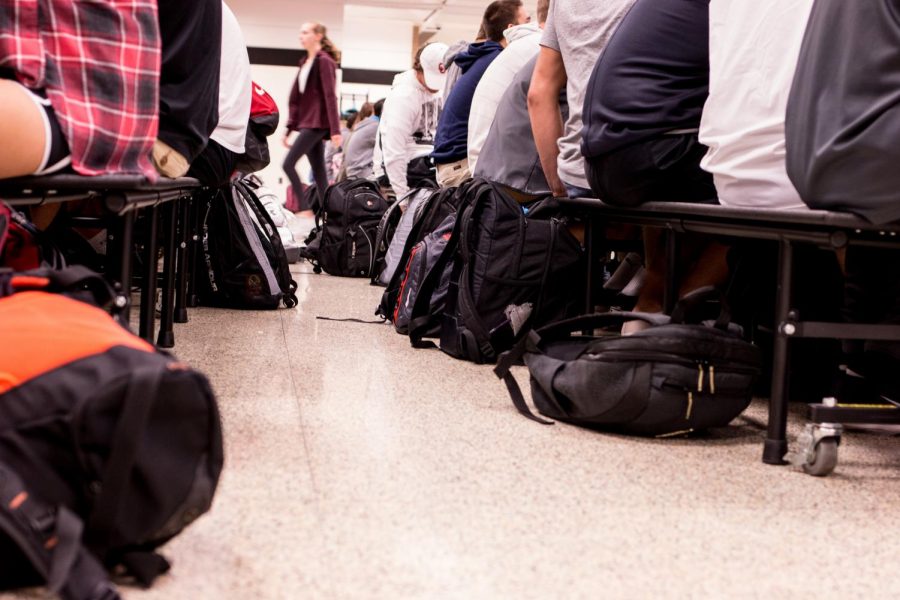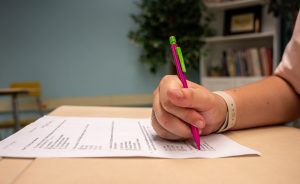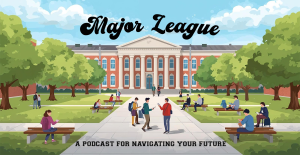Café Cramped
Ever wonder what goes into our lunch? Figuratively, that is.
September 13, 2018
No matter what you like, what your future plans are, or what you struggle with, we all have one period in common. Lunch. And if you have seventh period lunch this year, this one’s for you.
When I thought of this article and set upon its journey, I planned on exposing the administration on the cruel experiment they’re performing on us and to see if it’s possible for us to make it through the cafeteria lines and actually find a place to sit. I wanted to understand what causes a single lunch period to to grow so much more congested than the other two, as 7th period tends to. So to find answers, I sat down with Dr. Kreider.
It won’t surprise many of you to find out that a lunch period is assigned based on what fits your schedule the best.
“It’s all just based on where all the other classes are in the school day, as well as how many kids we send to Beattie and how many AP classes are running period 5/6 and 6/7 that push people to 9,” Kreider said. “And it could be a combination of things that you really can’t project.”
Here’s where things start to get interesting, though. The cafeteria is suited for 500 students, Kreider explained. Makes sense since our school is comprised of about 1,500 kids. Going through the numbers though, 5th period lunch contains 359 students, 7th period resting at 530, and 9th clocking in at 463.
If, like me, you didn’t catch on to this the first time you heard these numbers, 7th period is holding around 70 kids more than the next highest, and is 30 over the recommended amount of students. This shouldn’t be a huge deal. The custodians are easily capable of pulling out those extra tables, and Dr. Kreider even said, “If we needed to put in more seats, we could very easily put them there, even on a more permanent basis.”
This was very reassuring to hear, but my questions put me on another path: what kind of safety concerns does our current cafeteria setup entail?
“From a safety and security standpoint,” Kreider said, “that first floor area is large enough to handle more than 500.”
Of course, no one should be surprised to read that, as we prove this every morning when everyone congregates on the first floor before period one. This rested well with me, but I had get a particular pet peeve off my chest — the titanic amount of backpacks strewn throughout the cafeteria. I demanded an explanation.
”I agree,” Kreider said. “If you got 50% of the students to use their lockers, then you wouldn’t have the issue. I think if people were made aware of the issue it would be less of a problem because I believe our student body is very responsive to the needs of others.”
Although I trust Dr. Kreider, I wanted a different opinion, so I reached out to Officer Ray.
“It has some type of effect,” the School Resource Officer said. “Backpacks lined between rows of seats are of course a tripping hazard in case of an emergency, but in other terms, as long as students are sure to place their backpacks underneath their seats it shouldn’t be much of an issue at all.”
I concluded my research by seeking out the student view.
“Overall, the cafeteria’s a pretty safe place,” senior Nick Grumski said. “Of course, anyone could drive by and do anything with our glass front doors.”
Daniel Kolano put it plainly: “Yeah, I feel safe in the cafeteria.”
So, at the end of my assignment, what had I learned? Well, I gained insight into the process behind lunch scheduling. But more importantly, I was able to learn that no matter how hard finding that table with just the correct amount of space is, every student is capable of being accommodated and the administration is thinking about these issues just as much as we are — even if they aren’t the ones trying to squeeze onto that one last strip of the bench.













TheCreature • Sep 13, 2018 at 4:51 pm
The interrogative energy is perfect for this piece; stick it to the man and get the answers. Keep up the fantastic work \m/